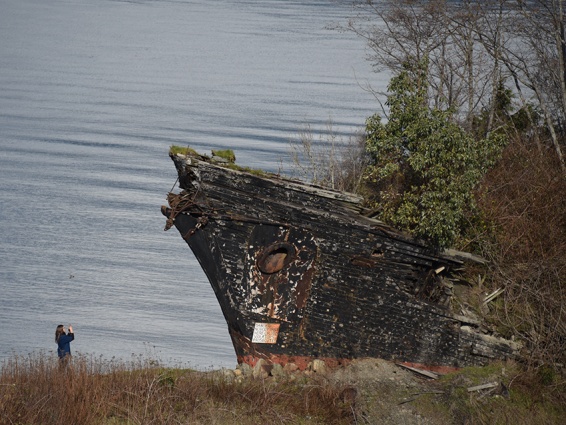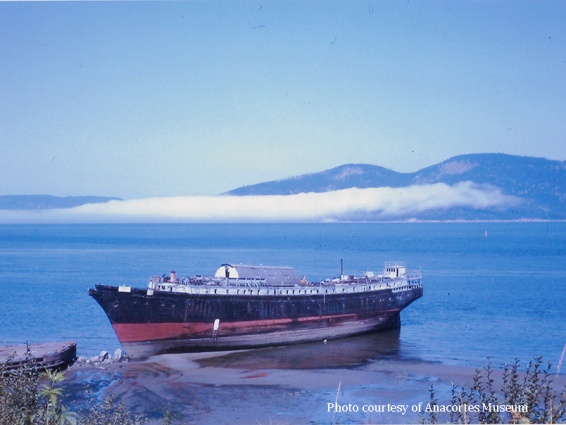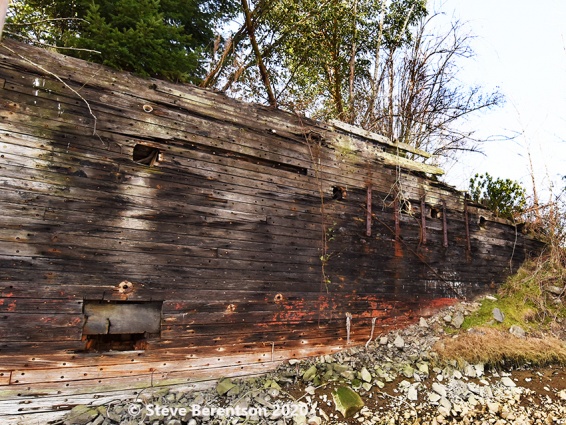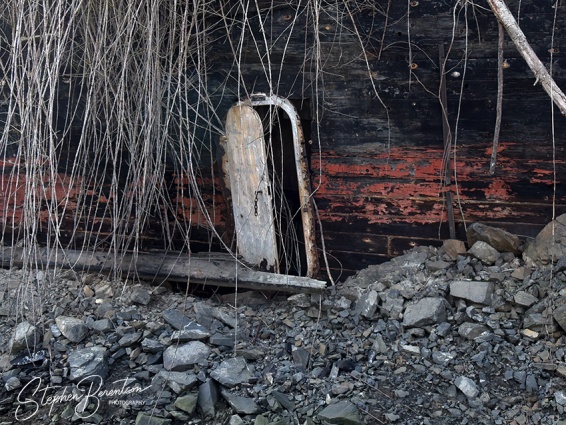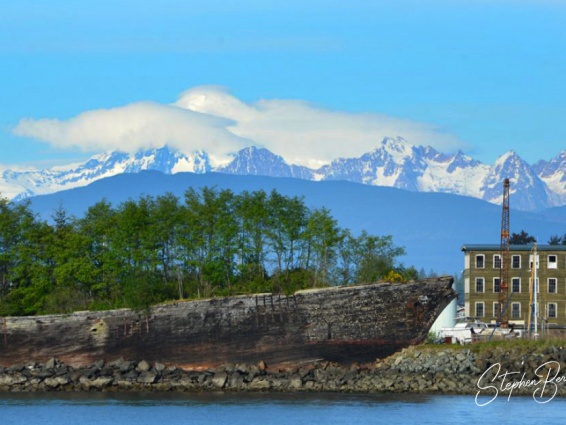Anacortes home to historic schooner ‘La Merced’
By Steve Berentson
While all but a handful of wooden ships from the heyday of Pacific Northwest shipping are gone and forgotten, the schooner “La Merced” still catches the eye and sparks the imaginations of visitors to the north shore of Fidalgo Island.
Granted, the storied vessel has been stripped of masts and deck fittings, but the weather-worn hull is largely intact, serving as a breakwater at Lovric Sea-Craft boat yard since 1966.
Anyone who walks on the Guemes Channel Trail along the shoreline from the state ferry terminal spots La Merced on the horizon, masts and rigging now replaced by alder trees. Sunset light often illuminates the dark hull, with traces of red paint still visible as weather continues to take its toll.
This schooner’s vital role in American shipping history has not gone unnoticed. In 1990 she was placed on the National Register of Historic Places. It was the spirited campaign to win that status that yielded much of the following information about La Merced.
Her story begins in Benicia, California in 1917, when the four-masted schooner was built by James Robertson and launched, joining the ranks of hundreds of other American schooners. She was an impressive sight: a 232-foot boat with a 42.6-foot beam and a 26.65-foot depth of hold, registered at 1,938 net tonnage.
The “four-master” was the predominant large schooner of the eastern seaboard of the U.S. About 450 such vessels were built on the Atlantic Coast, and another 100 on the Pacific Coast.
In a day when great quantities of fuel were transported in metal containers packed in wooden boxes, La Merced’s working career began with Standard Oil. She carried oil products with ports of call including San Pedro, San Francisco, and Melbourne, Australia.
After two years in the Standard Oil fleet, La Merced was sold to W.S. Scammell of Port Townsend, Washington. She remained in the case oil trade until 1926, with ports of call including Hawaii, the Solomon Islands and British Columbia. She was purchased by a Seattle buyer in January 1926 and underwent conversion, commencing a colorful chapter as a floating salmon cannery in Alaska.
Her four masts were retained, along with booms and sails, but the deck profile changed with addition of a large deckhouse. An elevated pilothouse was also added, as were crew bunks in the hold.
A May 31, 1947 news report stated: “The La Merced, a veteran of the Seattle waterfront, has been traveling north for numerous years. Salmon are caught by the fishermen aboard the vessel, cleaned and canned, and transported to shore. The vessel is carrying a canning and fishing crew of 50 Filipinos, and a ship’s crew of 20, with an additional eight men for assorted duties. Last year the La Merced brought back a total of 61,000 cases of canned salmon.”
La Merced continued her career as a floating cannery until 1965, when she was sold to the Rainwater Terminal Company of Seattle. Rainwater commenced scrapping the vessel, removing her propellers, engines, and deck fittings. The masts were cut off near the level of the deck in August of that year. The bowsprit was also cut off.
The hulk was moved to Lovric Shipyard in 1966 and put in place as a breakwater. The vessel is technically no longer afloat but instead lies nestled in fill and rock rip-rap. Dredged sand and mud from the shipyard were used to fill the interior of the vessel. The cannery cabin on the weather deck was pulled off and burned in 1987 by Lovric because of rot and the danger of imminent collapse.
As noted, a bid to see the vessel listed National Register of Historic Places bore fruit in 1990. Locally, she joins the former U.S. Army Corps of Engineers sternwheeler W.T. Preston with that distinction.
The Preston was pulled from the water to an upland site near the one-time Burlington Northern Railway Station. While the Preston is open seasonally for tours under the umbrella of the Anacortes Museum. La Merced is located on private land, not accessible to the public due to safety concerns.
(Photo of La Merced arriving in Anacortes in 1966 courtesy of the Anacortes Museum, other photos taken by Steve Berentson)

About Photographer Steve Berentson
A fourth generation Skagit County native who was moved kicking and screaming from this island community in 1960. I finally reclaimed an Anacortes address in 1980, and I have been in constant celebration of my return since that time. Many of us who call Anacortes home love Fidalgo Island for its natural assets: among them are rugged beaches, pristine lakes, thousands of acres of forestland and some awesome views of the Skagit Valley and surrounding islands. Another element of my love affair with this community is its people, both natives and immigrants. They will “star” in many of my journal entries.
PHOTO LICENSING
Photos are available for use as prints and online use. Please contact me for pricing.
PRINTS
$12 for 5 X 7 inch archival print, mailing included.
All Photos are © Steve Berentson. All rights reserved.


